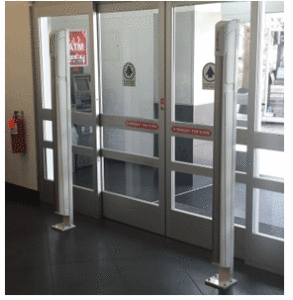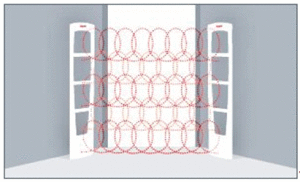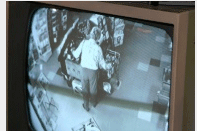 There’s been some news swirling around the LP world for a few weeks now about California and some new laws that the state has passed. Basically, the state raised the threshold for a felony theft to $950. The article hinted that shoplifting has increased in the major retail stores and calls for shoplifting cases have increased by 25% to the LAPD. The article blamed the new legislation for this. Here’s a link to that article if you’d like to read it. (http://losspreventionmedia.com/insider/shoplifting-organized-retail-crime/welcome-to-california-a-shoplifters-paradise/?mqsc=E3836406).
There’s been some news swirling around the LP world for a few weeks now about California and some new laws that the state has passed. Basically, the state raised the threshold for a felony theft to $950. The article hinted that shoplifting has increased in the major retail stores and calls for shoplifting cases have increased by 25% to the LAPD. The article blamed the new legislation for this. Here’s a link to that article if you’d like to read it. (http://losspreventionmedia.com/insider/shoplifting-organized-retail-crime/welcome-to-california-a-shoplifters-paradise/?mqsc=E3836406).
I know I’ll catch some flak from my colleagues, but I’m going to openly disagree. Honestly, I don’t think your average shoplifter is paying much attention to the state laws governing shoplifting. In my home state of Louisiana, felony theft, when I started my LP career was $350. Over time, the state legislators have increased that to $500, and more recently to $750. So where that shoplifter was being charged with a felony 10 years ago, they are now being charged with a misdemeanor. In most cases, they are still booked into parish jail and have to bond out. Very rarely do officers issue a citation. Our jails are just as over-crowded as California and our budget situation is arguably worse. If California is seeing an increase in shoplifting, let’s also consider that the state has no laws regarding organized retail crime.
In Louisiana, there are organized retail crime laws on the books. In addition, shoplifting has a habitual offender clause. These two pieces of legislation are what makes an impact, not the dollar threshold for a felony. Your organized criminal enterprises are what’s causing you problems. These are the boosters who target stores up and down the interstate. The groups that make a living conducing refund fraud and those individuals who just will continue to steal because they see it as “victim-less”. These are the people that impact retailers and these are the ones that deserve the harsher penalties. I don’t believe a high school kid, or college freshman should be subject to a felony if their first offense is stealing a $300 pair of headphones. They need consequences, but a felony record is not one of them.
Why organized crime laws work for the state
If you are stealing for the sole purpose of re-selling for profit, you are a problem. Chances are, if you’re involved with a group like this, you’re also involved in other, more serious crimes. Just this past year, I was able to help local detectives make a case against a ring of car thieves. While detectives didn’t have enough evidence at the time to book anyone on the car thefts, the same people were involved in organized retail crimes. They were stealing large quantities of ammunition and then selling the merchandise at local flea markets and gun shows to fund their car theft operation. Police were able to use the organized crime laws to bring felony charges against them, which led them to the evidence they needed to bust the car theft case wide open. Had it not been for those laws being on the books, these violent criminals may still be out on the streets.
Additionally, Louisiana has a habitual offender clause in the shoplifting law. Anyone convicted of shoplifting 3 times shall be charged with a felony on each subsequent arrest. Basically, if you are convicted 3 times of shoplifting, whether those convictions are misdemeanors or felonies, any subsequent arrest is upgraded to felony charges from the DA’s office. I’ve seen this work in action a dozen or so times throughout my time here. Just last year, we busted a guy for stealing about $200 worth of apparel. He was out on parole for aggravated battery. He had 4 other shoplifting convictions. The DA prosecuted him as a habitual offender, which revoked his parole and he went back to prison to serve the remainder of his 5 year sentence. That’s what has an impact. If a person knows that they can face actual time, you have a deterrence to shoplifting.
So maybe, retail leaders in California should shift their focus from complaining about the felony threshold, to lobbying their elected leaders to pass meaningful legislation that will actually have an impact on shoplifting. While some professional criminals will take advantage of this new law, the retail community and lawmakers should work together to pass laws that target those that are the true problem. That starts with an organized retail crime law, California.
 It’s no big secret that I can’t stand a thief; I did make a career out of catching them. Shoplifters really get under my skin, but employee theft really fires me up. You put people to work, give them opportunity to grow and instead of putting in the long hours, hard work and dedication needed to move forward, they steal from you. They betray your trust, slap you in the face and take money out of your pocket and food off your family’s table. Will you ever stop employee theft completely? Probably not. You can, however, minimize the risk.
It’s no big secret that I can’t stand a thief; I did make a career out of catching them. Shoplifters really get under my skin, but employee theft really fires me up. You put people to work, give them opportunity to grow and instead of putting in the long hours, hard work and dedication needed to move forward, they steal from you. They betray your trust, slap you in the face and take money out of your pocket and food off your family’s table. Will you ever stop employee theft completely? Probably not. You can, however, minimize the risk. Whether you’re a small one store business, or a large chain store, loss prevention awareness training for your teams cannot only protect against criminal acts, but also make a direct and positive impact on your bottom line. There is an inherent value in awareness training that lots of managers just don’t take advantage of. The core of any successful loss prevention program is not how many shoplifters are caught, nor is it how many employees were arrested; it’s training and awareness of your store teams. We are called loss “prevention,” not loss “reaction,” right? So how do you persuade your managers to see the value?
Whether you’re a small one store business, or a large chain store, loss prevention awareness training for your teams cannot only protect against criminal acts, but also make a direct and positive impact on your bottom line. There is an inherent value in awareness training that lots of managers just don’t take advantage of. The core of any successful loss prevention program is not how many shoplifters are caught, nor is it how many employees were arrested; it’s training and awareness of your store teams. We are called loss “prevention,” not loss “reaction,” right? So how do you persuade your managers to see the value? Is your burglar alarm giving you all it’s got? Technology keeps updating but there is one area you may not be thinking about getting more from your dollar: your burglar alarm system.
Is your burglar alarm giving you all it’s got? Technology keeps updating but there is one area you may not be thinking about getting more from your dollar: your burglar alarm system. My grandparents owned a small hardware store back in the late 1950s. Back then, when my grandpa left at 5pm, he simply locked the back door, gathered his belongings and left, locking the double glass front door behind him with nothing more than a standard lock that you’d find on any home at the time. The front of the store was nothing but glass. He had cash and at least $100k worth of merchandise on the shelves. Wouldn’t it be nice if things could go back to the way they were back then? Could you imagine if you left your store this soft nowadays? Burglaries happen, and they happen often. Over the past ten years as a Regional LP manager for my company, I’ve had it happen a total of 12 times. About once a year, or so, someone, somewhere across my region, breaks into one of my stores; or at least tries to do so. We have a lot of things that we implement to prevent this from happening, so when someone is able to breach our perimeter, it’s usually caused by human error.
My grandparents owned a small hardware store back in the late 1950s. Back then, when my grandpa left at 5pm, he simply locked the back door, gathered his belongings and left, locking the double glass front door behind him with nothing more than a standard lock that you’d find on any home at the time. The front of the store was nothing but glass. He had cash and at least $100k worth of merchandise on the shelves. Wouldn’t it be nice if things could go back to the way they were back then? Could you imagine if you left your store this soft nowadays? Burglaries happen, and they happen often. Over the past ten years as a Regional LP manager for my company, I’ve had it happen a total of 12 times. About once a year, or so, someone, somewhere across my region, breaks into one of my stores; or at least tries to do so. We have a lot of things that we implement to prevent this from happening, so when someone is able to breach our perimeter, it’s usually caused by human error. It’s not too many industries where I can share two separate stories of a crook falling four stories after trying to steal. This is why I chose Loss Prevention as my career. It’s not the thrill of the chase, or the feeling I get when I close a big case; no, it’s the funny stories I get to tell!
It’s not too many industries where I can share two separate stories of a crook falling four stories after trying to steal. This is why I chose Loss Prevention as my career. It’s not the thrill of the chase, or the feeling I get when I close a big case; no, it’s the funny stories I get to tell! It was 4:30am on a Tuesday morning. My company cell phone pierced through the quiet halls of my house. At first, I didn’t get out of bed; perhaps it was a wrong number. Silence. As I doze back off, I hear the familiar tone once again. Who could be calling me and for what reason at this hour? I let it ring. I hear the chirp of the voicemail. Before I can muster the energy to get out of bed, I hear my personal phone ringing. This one is next to me on the night stand. Something is wrong, I immediately think to myself. When I reach for my phone in the middle of the dark room, eyes still blurry, I see the caller ID. It’s a sheriff’s deputy that I’m good friends with. My heart is in my throat as I answer. “You’re morning crew was just robbed at gunpoint. Get to the store now.”
It was 4:30am on a Tuesday morning. My company cell phone pierced through the quiet halls of my house. At first, I didn’t get out of bed; perhaps it was a wrong number. Silence. As I doze back off, I hear the familiar tone once again. Who could be calling me and for what reason at this hour? I let it ring. I hear the chirp of the voicemail. Before I can muster the energy to get out of bed, I hear my personal phone ringing. This one is next to me on the night stand. Something is wrong, I immediately think to myself. When I reach for my phone in the middle of the dark room, eyes still blurry, I see the caller ID. It’s a sheriff’s deputy that I’m good friends with. My heart is in my throat as I answer. “You’re morning crew was just robbed at gunpoint. Get to the store now.” EAS is great isn’t it? For the most part, if someone is stealing product “X,” you slap on a quick tag or label and you see a pretty substantial reduction in shrink (for the most part.… Live in the real world). As my LP career has progressed over the years, I’ve seen EAS change drastically. I’ve also seen what retailers apply EAS tags to change as well. Often times, I scratch my head in disbelief at the ideas that come out sometimes and others, I pull my hair out because we could have been more proactive with tag placement. I’ve also seen some fantastic ideas from my store teams on some not so standard tagging procedures.
EAS is great isn’t it? For the most part, if someone is stealing product “X,” you slap on a quick tag or label and you see a pretty substantial reduction in shrink (for the most part.… Live in the real world). As my LP career has progressed over the years, I’ve seen EAS change drastically. I’ve also seen what retailers apply EAS tags to change as well. Often times, I scratch my head in disbelief at the ideas that come out sometimes and others, I pull my hair out because we could have been more proactive with tag placement. I’ve also seen some fantastic ideas from my store teams on some not so standard tagging procedures. Everyone I know loves a good “dumb criminal” story. In fact, I can’t go a day without someone (store managers, district managers, executives, family…) asking me to tell a crazy shoplifting story. I have a top 10 list that I usually gravitate towards, but after yesterday, I may have to change it to a top 11.
Everyone I know loves a good “dumb criminal” story. In fact, I can’t go a day without someone (store managers, district managers, executives, family…) asking me to tell a crazy shoplifting story. I have a top 10 list that I usually gravitate towards, but after yesterday, I may have to change it to a top 11.